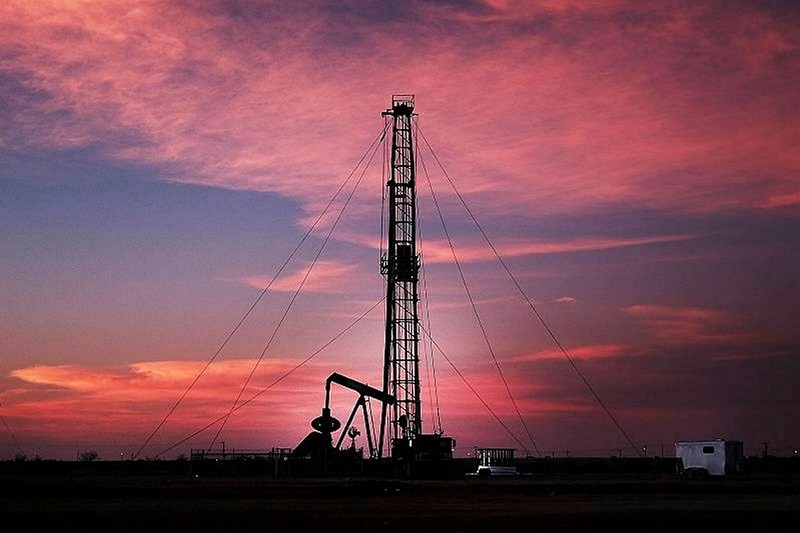
A vast field of shale rock in West Texas which could yield 20 billion barrels of oil, making it the largest source of shale oil the U.S. Geological Survey (USGS) has ever assessed and the world's fourth largest oil reserve, has been found in west Texas, agency officials said.
The Wolfcamp Shale geologic formation in the Midland area also contains an estimated 16 trillion cubic feet of natural gas and 1.6 billion barrels of natural gas liquids, the USGS said in a release on Tuesday.
That makes Wolfcamp fall behind only Saudi Arabia's Ghawar field with 75 billion barrels, Kuwait's Burgan field with 65 - 70 billion and Saudi's Safaniya field with 50 billion barrels remaining.
The discovery is nearly three times larger than the shale oil found in 2013 in the Bakken and Three Forks formations in the Dakotas and Montana, said Chris Schenk, a Denver-based research geologist for the agency.
With oil prices fluctuating between $45 and $50, Wolfgang is worth between $900 billion to $1 trillion.
The field has produced crude since the 1980s through conventional methods. New techniques, however, such as hydraulic fracturing and horizontal drilling that have facilitated the U.S. shale boom since 2008, is expected to increase shale production from Wolfcamp as well.
The Wolfcamp Shale is part of the sweeping and energy-rich Permian Basin, which includes a series of basins and other geologic formations in West Texas and southern New Mexico. It's one of the most productive oil and gas regions in the U.S.
Ken Medlock, director of an energy-studies program at Rice University in Houston, said it seems "likely that we're seeing the birth of a new Permian Basin." The advent of horizontal drilling, hydraulic fracturing and other advancements will allow for the removal of shale oil at a volume that will make the basin "the dominant onshore platform for oil production," he said.
Schenk said it's been known for years that the region could yield new bountiful oil production, but it took the U.S. Geological Survey time to assess the Wolfcamp Shale and estimate the volume of that production.
"We think the potential is there for the future, and it's not going to be realized overnight," he said.
The release issued by the Geological Survey on Tuesday hints at the resurgence the oil and gas industry likely will see in Texas in the coming years following a downturn during which energy prices tumbled and tens of thousands of jobs were lost.
"The fact that this is the largest assessment of (unconventional) oil we have ever done just goes to show that, even in areas that have produced billions of barrels of oil, there is still the potential to find billions more," Walter Guidroz, coordinator of the agency's energy resources program, said in the release.
"Changes in technology and industry practices can have significant effects on what resources are technically recoverable, and that's why we continue to perform resource assessments throughout the U.S. and the world," he added.
Medlock explains that there are multiple shales that interlock, with Wolfcamp being just one, so it's expected that future drilling will unlock other oil fields that will be comparable to this week's assessment by the Geological Survey.
There are a number of factors that will determine how quickly oil is extracted from the Wolfcamp Shale, he said, but it will likely take years before any significant amount is gathered. The rate of production largely depends on technology, the cost to drill and oil prices, he said.
While the speed of production remains a question mark, what Medlock doesn't doubt is the economic benefit that will follow.
"The revival of the Permian Basin is going to last a couple of decades," he said.
The U.S. had 55 billion barrels of proven reserves as the end of 2015, according to the British Petroleum's Statistical Review of World Energy published in June. That ranks 9th among the world's total reserve holders.
Venezuela is first with 301 billion barrels in reserves, while Saudi Arabia is second with 267 billion and Canada tanks third with 172 billion barrels.
They are followed by Iraq, Iran, Russia, Kuwait, and the United Arab Emirates, according to the Review.
